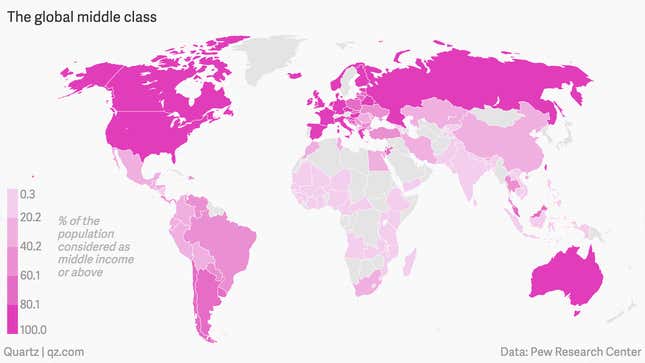The world’s middle class is not as rich, as large, nor as widespread as many believe. According to a new study by the Pew Research Center (pdf), only 1.7 billion people can be broadly classified as middle class, and many are at risk of slipping back into poverty.
Only 13% of the world’s population fall into the category of “middle income,” living on between $10.01 and $20 a day—an annual income of between $14,600 and $29,000 for a family of four, which is barely above the official US poverty line.
“The global middle class is more promise than reality as we take stock of it today,” Rakesh Kochhar, author of the study, told the BBC. ”It is smaller than we think, it is less well-off than we think, and it’s less concentrated than we think.”
Only 16% lived on $20.01 or more and the majority of them are in North America and Europe in 2011, the most recent year for which global data is available, according to Pew.

The vast majority, 71% of the global population, were still ranked as poor or low-income in 2011. That’s only a sliver better than it was a decade earlier when 79% of the world was considered poor or low income.
The gap in living standards between the world’s richest and poorest citizens has also barely budged: in 2011, 87% of the world’s high income earners lived in North America and Europe, compared to 87% in 2001.
